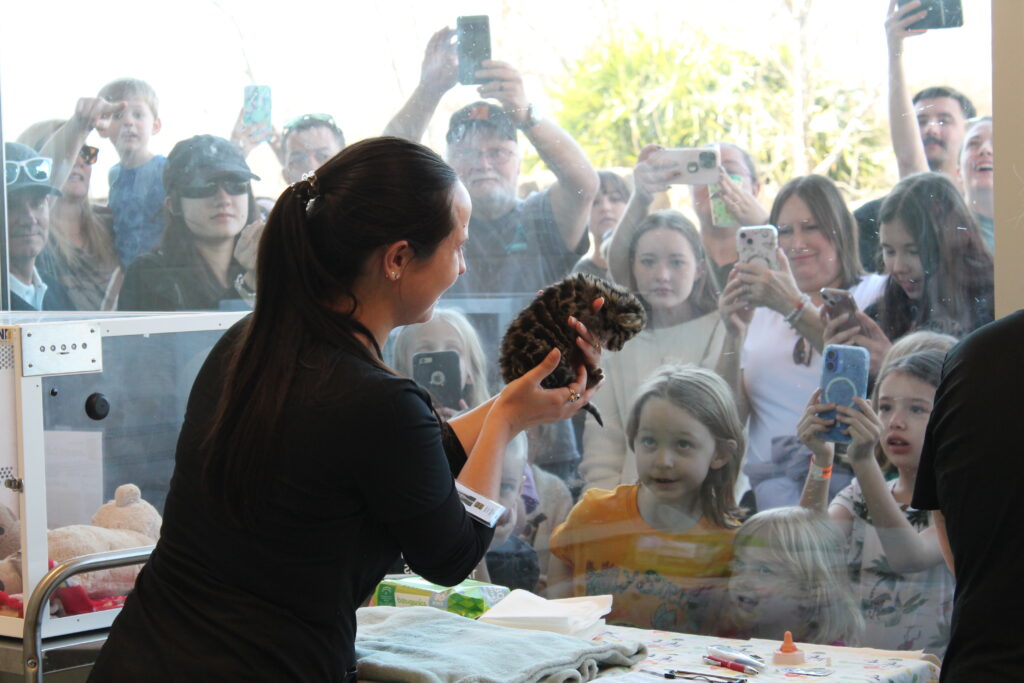
Heather Schwartz is a veteran at hand-raising clouded leopard cubs — and she’s back on the job.
She’s the director of veterinary services at the Nashville Zoo. She and the other members of the so-called carnivore keepers are caring for the latest cub born at the facility. They’ve been at it for weeks, since the “nest box” cameras caught the cub’s mother, Niran, go into labor.
“It’s really just all hands on deck, literally around-the-clock care,” she said. “You know, it’s just like having a newborn at home.”
Clouded leopards are notoriously difficult to breed. There is a major size difference between males and females, and the males can be aggressive. The mothers sometimes neglect or harm the cubs.
Nashville Zoo is part of a consortium working to preserve the rare cats. Others include the zoos in Washington, D.C.; Tacoma, Washington; and some facilities in Thailand.
The most recent cub — who hasn’t been named — was the 44th to be born in Nashville since 1991.
It all started a few months ago. Clouded leopards have a relatively short fertility period, and they knew Niran was in hers.
“They were observing her, and they actually witnessed the breeding,” Schwartz said with a laugh. “So, sometimes, it’s a little too personal, how close they know things are getting between the cats. So, that put us on watch.”
The team waited a few weeks before checking. Schwartz’s tenure at the zoo made that a little easier.
“So, Niran, I raised as a little baby, so she’s very comfortable with me,” she said. “So, she allowed me to sit in with her and put an ultrasound probe on her while she drank goat’s milk. And while we did that, we just checked to see if she was pregnant, and sure enough, she had one.”
Gestation lasts only about 90 days, so the staff had a rough idea of when labor would start.
The cubs spend quite a bit of time away from their mothers after they’re born, Schwartz said. That’s to increase the infant survival rate.
“We found if we pull them at a young age and hand-rear them, that we take away all that risk of the mother neglecting them, possibly eating them and all of that,” she said.
The baby stage is pretty labor intensive.
“You need bottles,” Schwartz said. “You’ve got to help … them at every feed, and they need warm space to sleep. So, we get them in a little incubator. And so we put in little stuffed animals with heart beats in there with them … that simulates mom.”
The next step for this cub will be getting a name. The zoo is holding an election online. There are three possible names: Lara, Vi and Tashi. Each vote costs $1, and proceeds are going to wildlife conservation efforts in Vietnam. The nonprofit beneficiary, Save Vietnam Wildlife, works to protect the clouded leopard’s natural habitat.
Then, she’ll be paired up with a male. Unlike wild leopards, who are solitary, Nashville’s live as couples. With any luck, she’ll add another cub into the species survival program in a few years.

